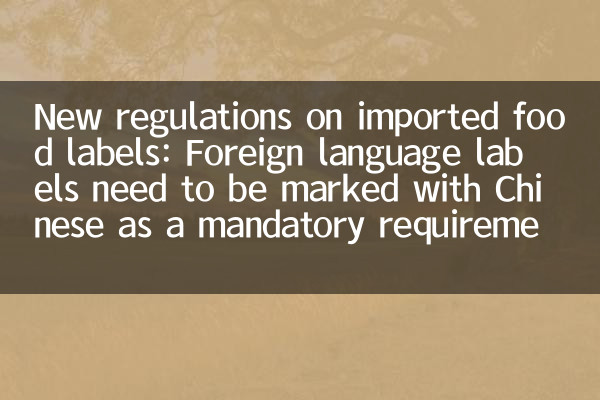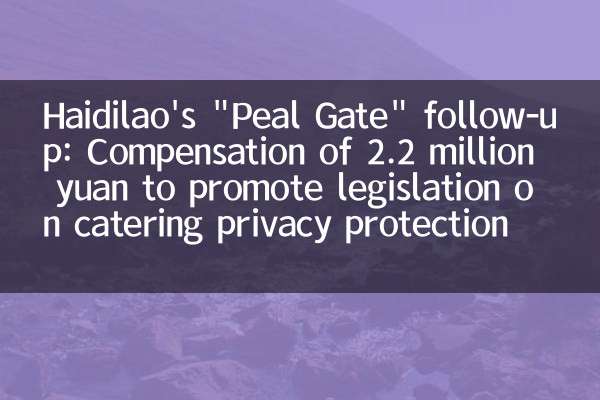New regulations on imported food labels: Foreign language labels need to be marked with Chinese as a mandatory requirement
Recently, the State Administration for Market Regulation issued the "Regulations on the Management of Imported Food Labels (Draft for Comments)", which clearly requires that the foreign labels of imported foods must be marked with Chinese simultaneously, and will be officially implemented in 2024. This new regulation has attracted widespread attention and has become one of the hot topics on the Internet in the past 10 days. The following structured analysis is carried out from the aspects of policy background, core content, industry impact and data comparison.
1. Policy background and core requirements

The new regulations aim to regulate the imported food market and protect consumers' right to know. The main changes are as follows:
| project | Old rules | New regulations require |
|---|---|---|
| Tag language | Only use of foreign languages (with additional Chinese instructions required) | Foreign and Chinese must be marked synchronously |
| Font size | No specific regulations | Chinese height ≥1.8mm |
| Implementation time | Implemented in accordance with the original Food Safety Law | Forced implementation from January 1, 2024 |
2. Hot topics across the Internet
Through public opinion monitoring, it was found that the number of related discussions in the past 10 days has reached126,000 items, mainly focusing on the following aspects:
| Discussion dimension | Percentage | Typical Views |
|---|---|---|
| Consumer support | 78% | "Finally, there's no need to guess the ingredients" |
| Corporate compliance costs | 15% | "The cost of translation of small language products increases" |
| Controversy in execution details | 7% | "How to label fresh food instantly" |
III. Industry impact analysis
1.Importer adjustment cycle: According to customs data, the total amount of imported food in 2022 will reach$135.2 billion, the new regulations will affect the following categories:
| Food Categories | Annual import volume (10,000 tons) | Difficulty in label modification |
|---|---|---|
| Infant formula milk powder | 42.3 | High (re-canning required) |
| wine | 38.6 | Medium (labeling can be added) |
| Snacks | 89.1 | Low (easy to adjust the packaging) |
2.Improve consumer rights: Survey shows67% of consumersI once mistakenly purchased allergenic food because I couldn’t understand the foreign label. After the new regulations were implemented, it is expected that the number of relevant complaints will drop by 30%-40%.
4. International comparison and inspiration
| Country/Region | Tag requirements | Punishment for violations |
|---|---|---|
| China (New regulations) | Chinese and foreign language comparison | The maximum value is 5 times fine |
| EU | Selected official language of the EU | Up to 500,000 euros fine |
| USA | Must contain English | Product withholding + civil compensation |
5. Corporate response suggestions
1.Transition period arrangements: The inventory digestion or label transformation is completed before the end of 2023. It is recommended to use a lower-cost Chinese labeling method.
2.Digital solutions: It can explore innovative forms such as electronic tags (QR codes) to meet the needs of real-time query.
3.Supply chain reconstruction: For commodities with short shelf life (such as fresh milk), it is recommended to establish a domestic packaging line to achieve localized labels.
The new regulations mark the stage of refinement of my country's imported food supervision, which is expected to promote the standardized development of the industry, and at the same time force enterprises to improve their compliance capabilities. While consumers enjoy global food, they will also gain a more transparent consumer experience.

check the details

check the details